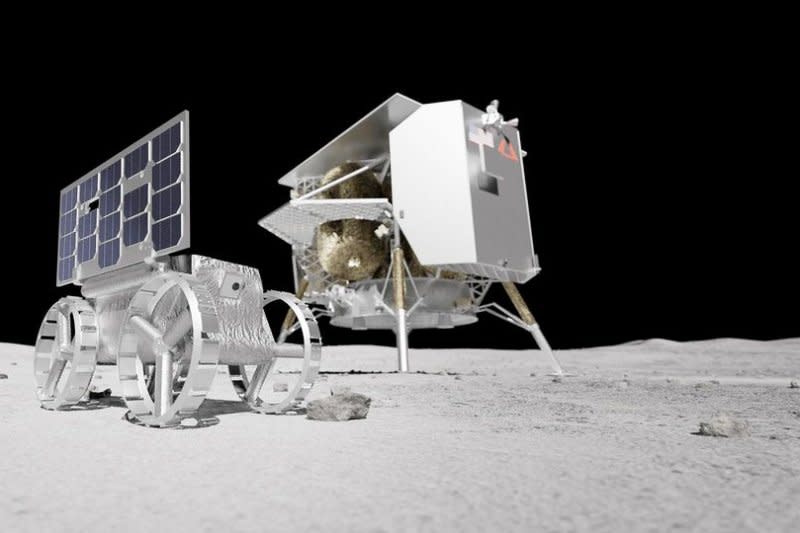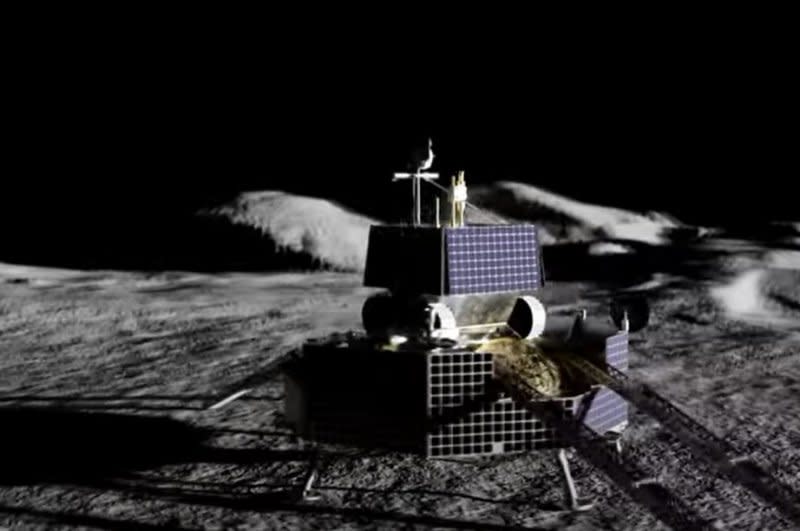Feb. 5 (UPI) — For the first time since 1972, NASA is putting science experiments on the moon in 2024. And thanks to new technologies and public-private partnerships, these projects will open up new areas of scientific possibility. As part of several projects launched this year, teams of scientists, myself included, will be conducting radio astronomy from the south pole and from the far side of the moon.
NASA’s commercial lunar payload services program will use unmanned landers to conduct NASA’s first science experiments from the moon in more than 50 years. The CLPS program is different from past space programs. Rather than NASA building the landers and operating the program, commercial companies will do so in a public-private partnership. NASA has identified about a dozen companies to serve as vendors for landers who will go to the moon.
NASA buys space on these landers for scientific payloads to fly to the moon, and the companies design, build and insure the landers, as well as contract with rocket companies for the launches. Unlike in the past, NASA is one of the customers and not the only driver.
CLPS sends
The first two CLPS payloads are scheduled to launch in the first two months of 2024. There is the Astrobotics payload, which launched Jan. 8 before a fuel problem cut short its trip to the moon. Then there’s the Intuitive Machines payload, with a scheduled launch for mid-February. NASA also plans several additional landings – about two or three per year – for each of the next few years.


I am a radio astronomer and co-investigator of NASA’s ROLSES program, called Radiowave Observations of the Lunar Surface of the photoElectron Sheath. ROLSES was built at NASA’s Goddard Space Flight Center and is led by Natchimuthuk Gopalswamy.
The ROLSES instrument will be launched by Intuitive Machines in February. Between ROLSES and another mission scheduled for the lunar side in two years, LuSEE-Night, our teams will land NASA’s first two radio telescopes on the moon by 2026.


Radio telescope on the moon
The moon — especially the far side of the moon — is a great place to do radio astronomy and study signals from extraterrestrial objects like the sun and the Milky Way galaxy. On Earth, the ionosphere, which contains the Earth’s magnetic field, distorts and absorbs radio signals below the FM band. These signs may be scrambled or may not even rise to the surface of the Earth.


On Earth, television signals, satellite broadcasts and defense radar systems make noise. To make higher sensitivity observations, you have to go into space, away from Earth.
The moon is what scientists call a tidal lock. One side of the moon always faces Earth — the “man on the moon” side — and the other side, the far side, is always away from Earth. The moon has no ionosphere, and with about 2,000 miles of rock between Earth and the far side of the moon, there is no interference. It’s quiet on the radio.
For our first mission with ROLSES, launching this month, we will collect data on environmental conditions On the surface of the moon, the solar wind hits the surface of the moon directly and creates a charged gas, called plasma. Electrons rise from the negatively charged surface to create a highly ionized gas.
This does not happen on Earth because the magnetic field deflects the solar wind. But there is no global magnetic field on the moon. With a low-frequency radio telescope like ROLSES, we’ll be able to measure that plasma for the first time, which could help scientists figure out how to keep astronauts safe on the moon.
When astronauts walk around the surface of the moon, they will pick up different charges. It’s like walking across the carpet with your socks on — when you reach a fistful, a spark can come out of your finger. The same type of discharge occurs on the moon from the charged gas, but it may be more harmful to astronauts.
Solar radio emissions, exoplanets
Our team is also going to use ROLSES to observe the sun. The surface of the sun emits shock waves that send out highly energetic particles and low-frequency radio emissions. We will use the radio telescopes to measure these emissions and see bursts of low-frequency radio waves from shock waves within the solar wind.
We will also examine Earth from the surface of the moon and use that process as a template to look for radio emissions from exoplanets that could support life in other star systems.
Magnetic fields are important to life because they protect the surface of the planet from the solar/stellar wind.
In the future, our team hopes to use specialized arrays of antennas on the far side of the moon to observe nearby star systems known to host exoplanets. If we detect the same kind of radio emissions coming from Earth, this will tell us that the planet has a magnetic field. And we can measure the strength of the magnetic field to determine if it is strong enough to protect life.
Cosmology of the moon
The Lunar Surface Electromagnetic Experiment at Night, or LuSEE-Night, will fly in early 2026 to the far side of the moon. LuSEE-Night represents the first attempt by scientists to do cosmology on the moon.
LuSEE-Night is a new collaboration between NASA and the Department of Energy. Data will be sent back to Earth using a communications satellite in lunar orbit, Lunar Pathfinder, funded by the European Space Agency.
Since the far side of the moon is uniquely radio-quiet, it is the best place for cosmological observations. During the two lunar night weeks that occur every 14 days, there is no emission from the sun, and there is no ionosphere.
We hope to study an unexplored part of the early universe known as the dark ages. The dark ages refer to before and just after the formation of the first stars and galaxies in the universe, which is longer than the James Webb Space Telescope can study.
During the dark ages, the universe was less than 100 million years old – today the universe is 13.7 billion years old. The universe was full of hydrogen during the dark ages. That hydrogen radiates through the universe at low radio frequencies, and when new stars turn on it, they ionize the hydrogen, producing a radio signature in the spectrum. Our team hopes to measure that signal and learn about how the earliest stars and galaxies in the universe formed.
There is also a lot of potential new physics that we can study in this last unexplored cosmological epoch in the universe. We will investigate the nature of dark matter and early dark energy and test our fundamental models of physics and cosmology in an unexplored age.
That process will begin in 2026 with the LuSEE-Night mission, which is both a fundamental physics experiment and a cosmology experiment.


Jack Burns is a professor of astrophysical and planetary sciences at the University of Colorado Boulder.
This article from The Conversation is republished under a Creative Commons license. Read the original article.
The views and opinions expressed in this commentary are solely those of the author.